Creative production
In the field
How post houses are integrating AI into modern workflows
October 2025
5 mins
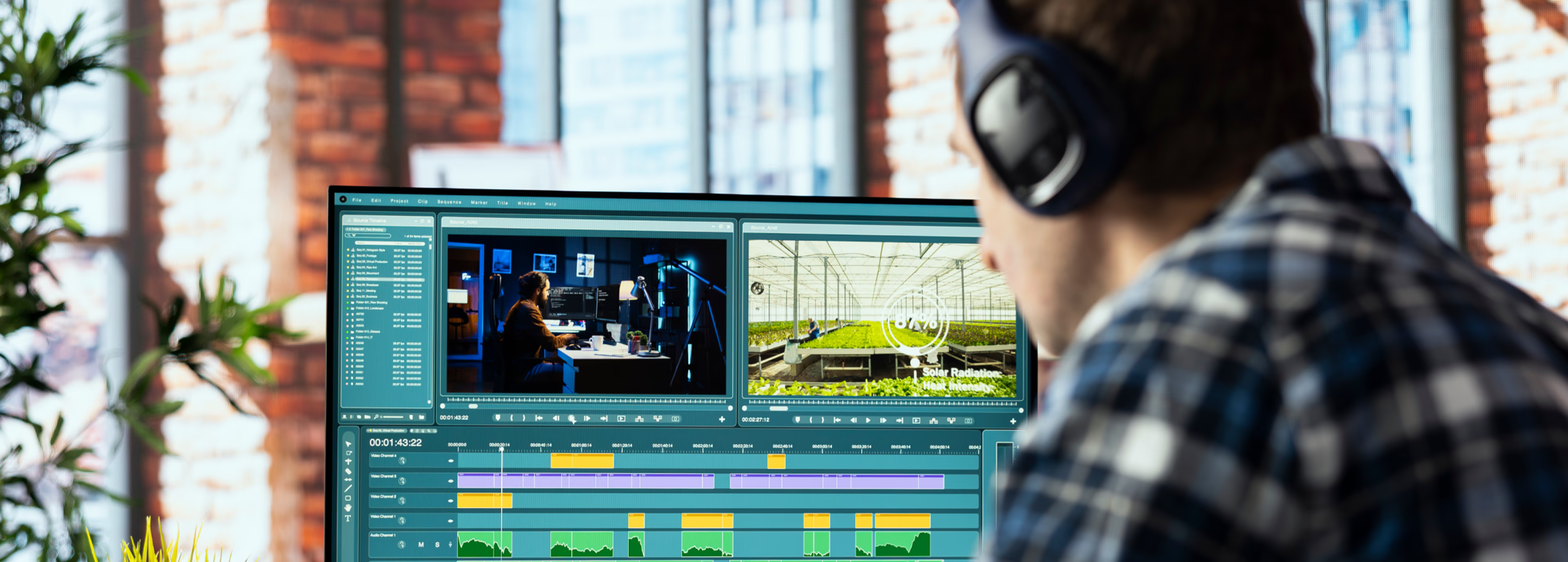
Table of contents
Your files, faster.
Access any file instantly, anywhere. Collaborate in real-time from one always-up-to-date, secure cloud filespace.
If you’re feeling uncertain about AI, you’re not alone.
Many in post-production are asking the same questions: will AI take over the edit suite? Should editors worry about their roles? Are we just training tools to replace ourselves?
Our take is that AI isn’t here to push us out, it’s here to handle repetitive tasks so we can stay creative.
Like most, we’re learning as we go. Testing tools, building guardrails and figuring out where AI adds value without compromising creativity.
We recently hosted Voices in post: what’s next, a panel discussion with industry pros who’ve seen it all, from the changing roles in post, to the rise of AI in production pipelines, to the reality of remote and hybrid workflows. Together, we explored the new normal for post-production (and what’s coming next).
Our panel included:
Joe Beirne, CTO, Postworks
Melissa Floreth, Post Supervisor, Evolve Studios
Jack Jones, Roundtable Post
Dominic Brouard, Solutions Engineer, LucidLink
Watch the full session here or keep reading for the highlights.
Real-world post-production AI applications
AI is already quietly reshaping post-production, not by replacing roles, but by making teams faster, more organized and more creative.
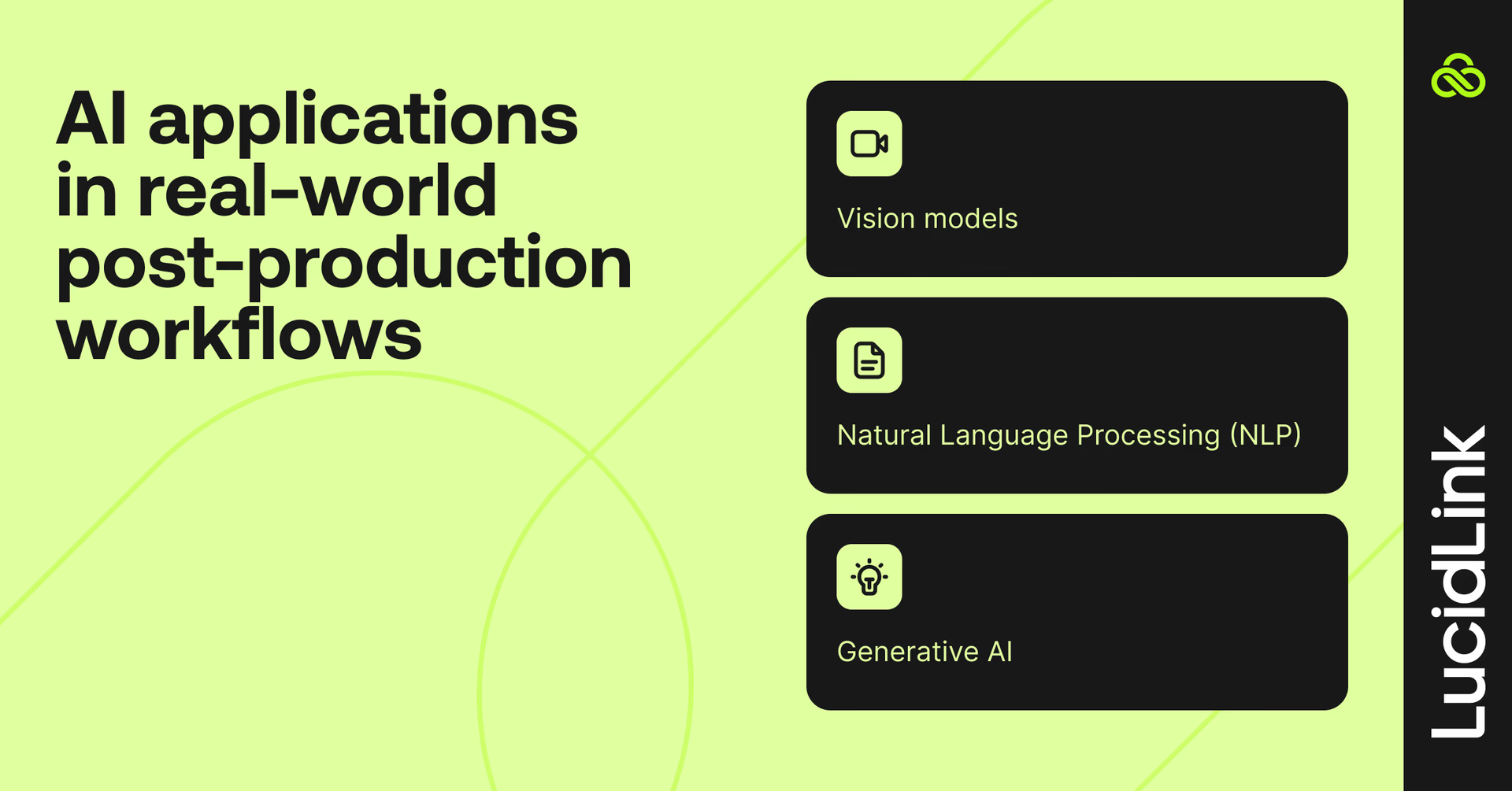
Here’s where it’s showing up today:
Vision models: analyze and tag video and images, simplifying media organization.
Natural Language Processing (NLP): process metadata, generate text and streamline documentation.
Generative AI: produce images, videos, graphics or concept references to support creative work.
Early-stage ideation
Melissa shared that her team is using AI as an assistant, not a replacement, leaning on it for early-stage ideation:
Generating references and concept imagery for pitch decks
Formatting documents or organizing client inputs
Speeding up day-to-day tasks so artists can focus on higher-value creative work.
Custom tool-building
Jack took it a step further, talking about both experimentation and software development. He encouraged teams to “go crazy” with tools like ComfyUI to see what’s possible, but his most exciting work involves building custom tools:
Automating tedious desktop tasks like file renaming using Cursor and other dev tools
Writing scripts to connect multiple software APIs, so they “talk to each other”
Creating an LLM-powered chat interface inside Baselight that can locate media, conform projects and streamline creative workflows, almost like having a smart assistant inside the grading suite
Massive time savings
Joe brought a practical production perspective, sharing that PostWorks is beta testing an app that preemptively generates mattes for entire shots, a task that once dragged on for weeks but now takes just days.
He described AI as a “great aid” for their development team but admitted it sometimes feels like “you hired ten people and one of them is insane.” A reminder that human oversight is still essential!
Even OpenAI-backed Critterz — an animated feature “made largely with AI” — underscores this point. While it promises faster, cheaper production, the film still relies on human artists, animators and voice actors to shape the story and make it copyrightable. It’s a case study in how AI can accelerate workflows, but not replace the craft or judgment of creative teams.
A culture of experimentation
Across the panel, a clear theme emerged: post houses aren’t waiting for “off-the-shelf” tools, they’re stitching together custom solutions and having fun with it. That way, AI becomes a flexible collaborator.
Takeaway: AI is not only automation. It’s about bending technology to fit your workflow, freeing artists to spend less time buried in process and more time shaping the story.
How AI shapes creative roles
AI is not here to take over the edit suite. Think of it as a teammate that handles the boring stuff so editors, colorists and VFX artists can focus on the creative decisions that really matter.
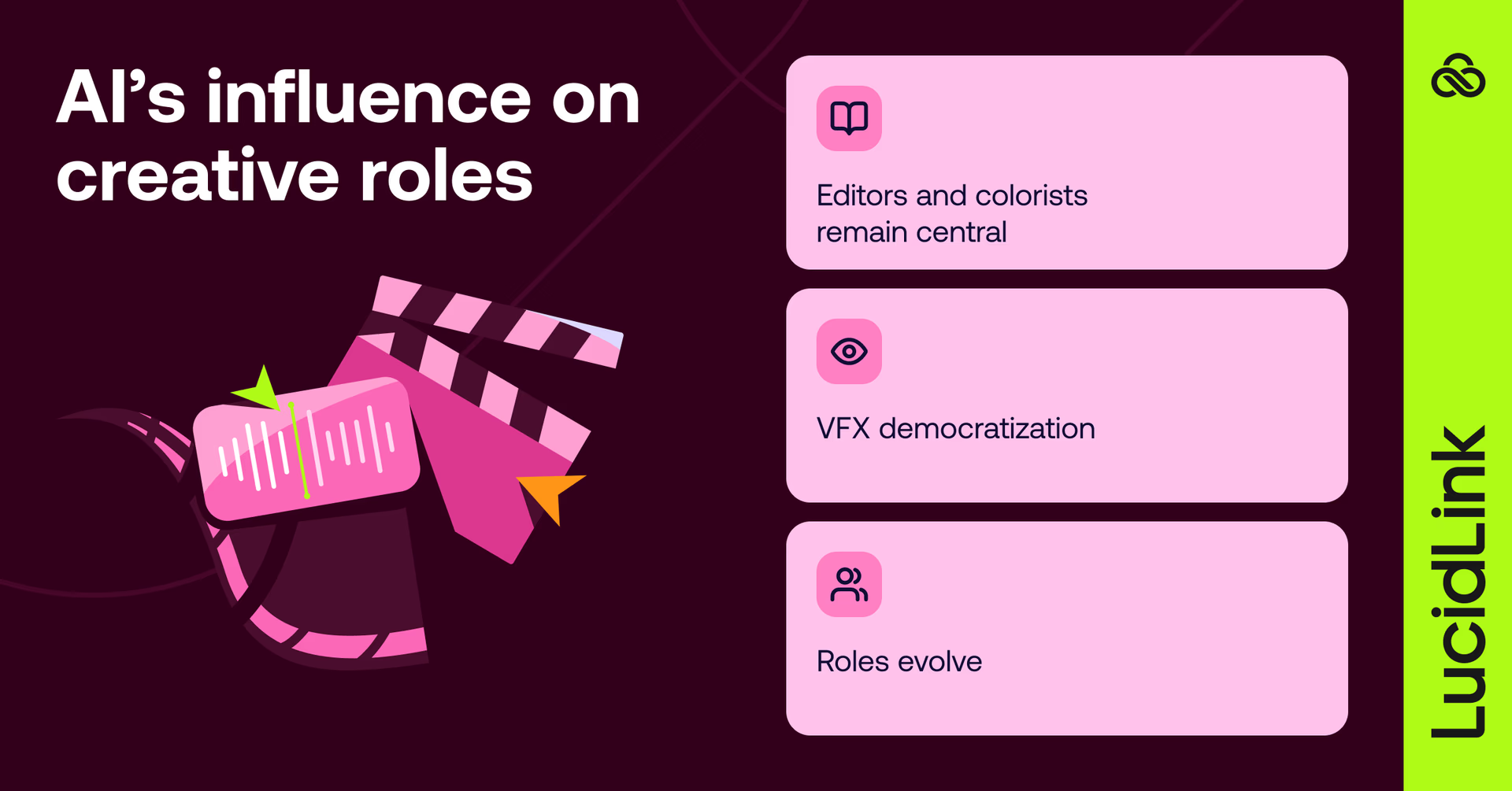
Here’s how that actually plays out in day-to-day post production:
Editors and colorists remain central: their judgment drives the storytelling, with AI acting as an accelerator.
VFX democratization: low-budget productions can access AI-generated set extensions, allowing them to achieve ambitious visuals.
Roles evolve: teams are learning prompting, tool integration and creative iteration with AI. New skill sets that complement (not replace) traditional expertise.
AI adoption in post production: hurdles and risks
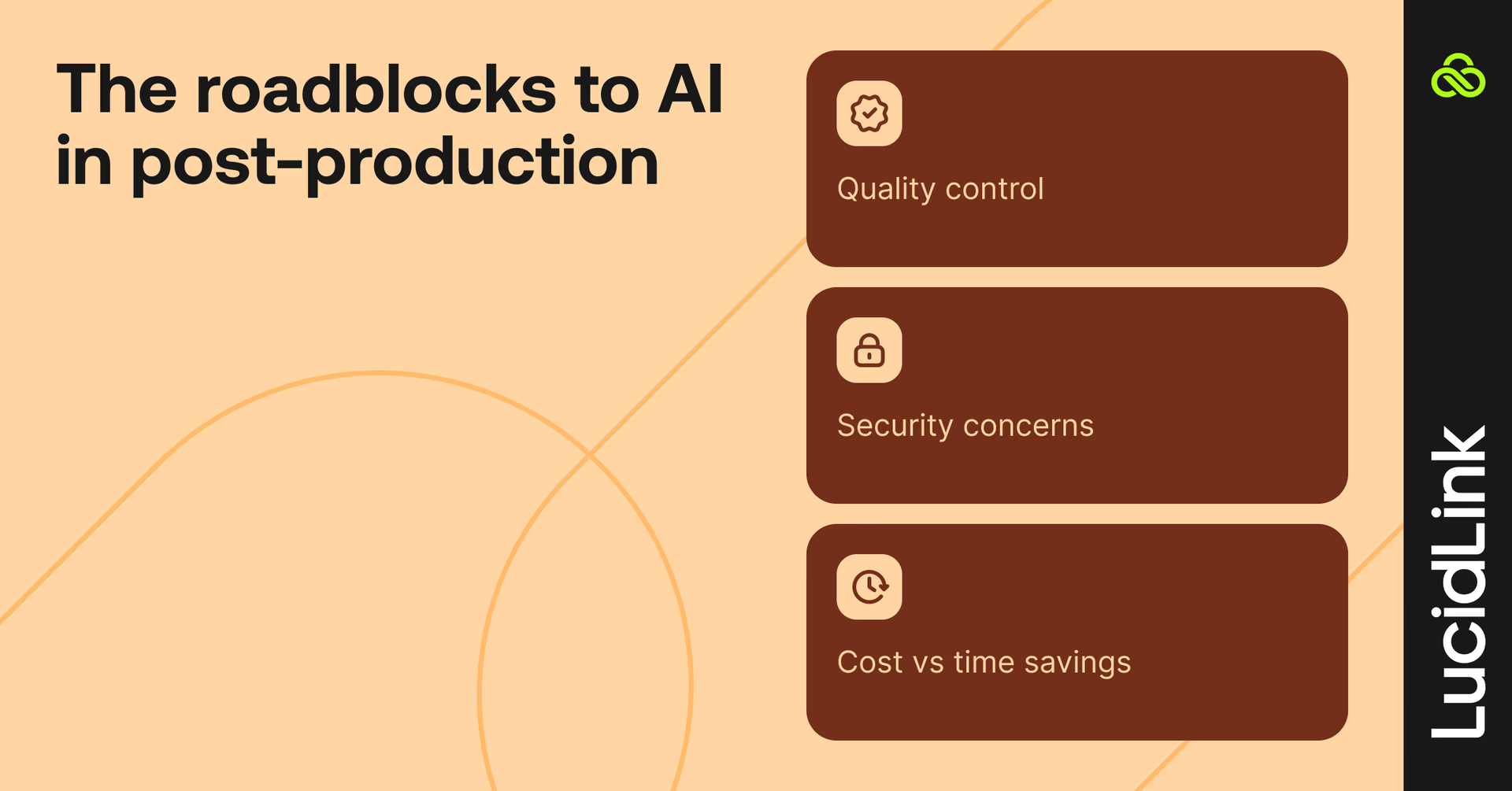
It’s normal to feel cautious about new technology. That caution is often justified. Common challenges using AI include:
Quality control: generative outputs can feel “uncanny” and inconsistent, requiring human oversight.
Security concerns: sensitive media must be protected; many facilities are exploring on-prem solutions to avoid data leaks.
Cost vs. time savings: the real ROI comes only if tools speed up delivery without sacrificing quality.
High-profile films like The Brutalist and Emilia Pérez have sparked debate over AI use in production, from voice refinement to visual adjustments. These examples highlight why it’s essential to prioritize oversight, ethics and transparency when AI enters creative pipelines.
The right AI tools disappear into the workflow. The wrong ones just get in the way.
How to balance AI with human artistry
The post houses thriving right now are teaching their teams how to prompt and refine AI outputs, setting clear quality standards and using AI to level the playing field for smaller productions.
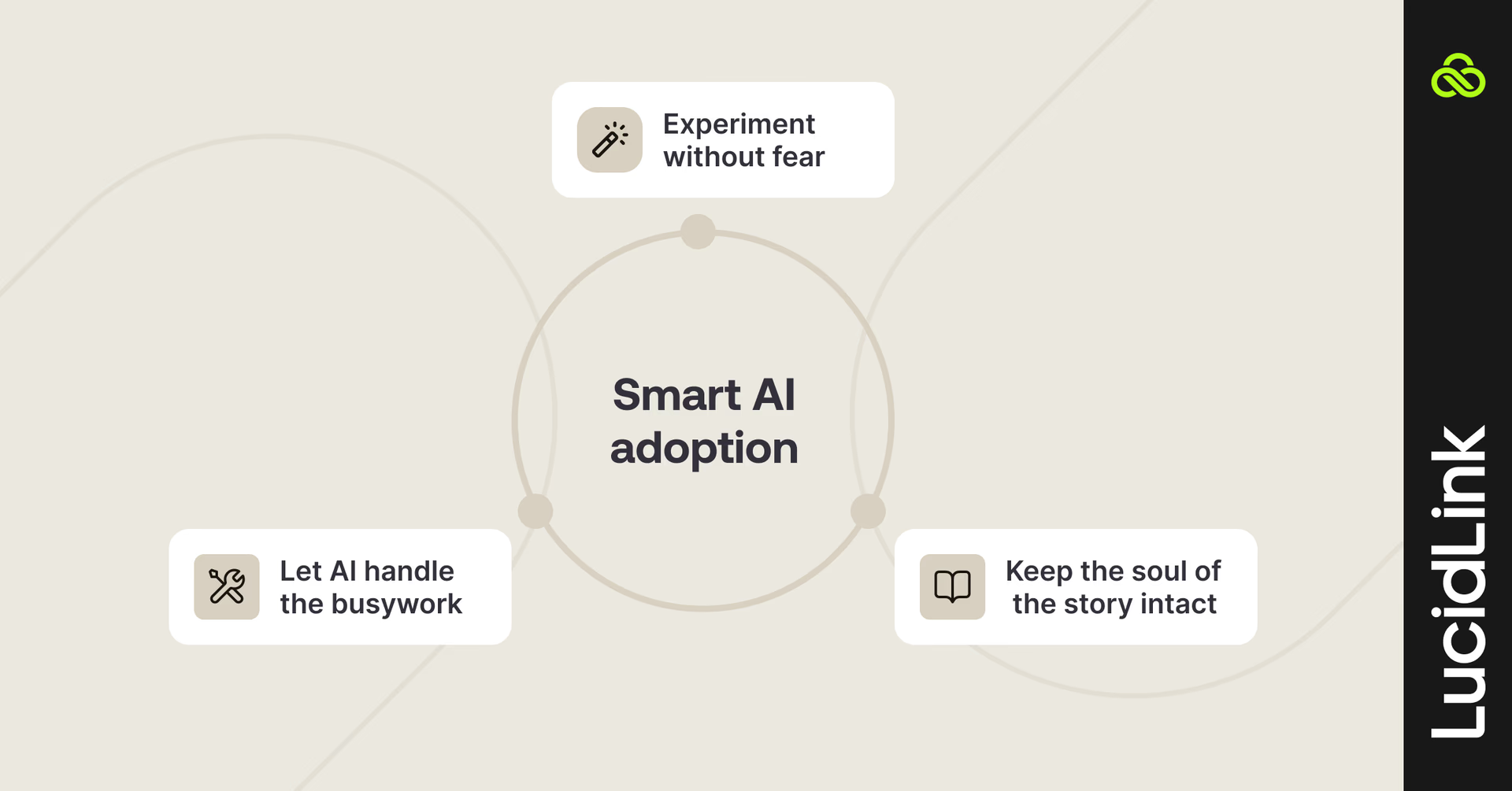
Here’s what smart AI adoption can look like:
Let AI handle the busywork: use AI for file ingest, metadata tagging and other repetitive tasks so your team can spend more time crafting the story.
Experiment without fear: generate quick ideas, try multiple directions and explore options that might have been too time-consuming or expensive before.
Keep the soul of the story intact: the emotional beats, pacing and tone should still come from human judgment — AI just gives you more room to get it right.
The future: human-centered, AI-accelerated post
Post-production is entering a new era, but the magic doesn’t need to be outsourced to AI.
As our panel made clear, human creativity is still the driver. AI is the teammate that clears the busywork, accelerates workflows and gives artists more space to focus on telling the story.
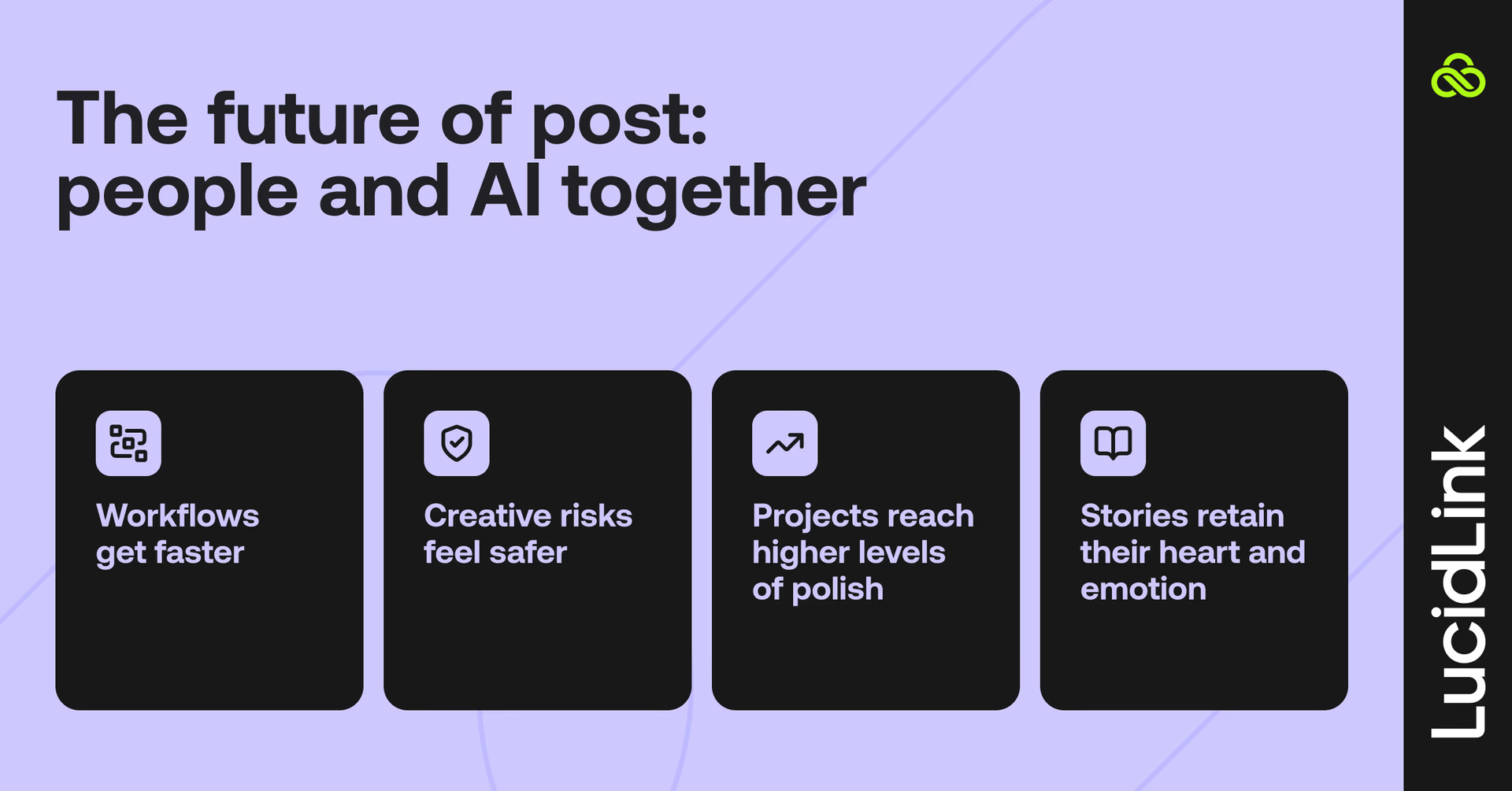
When humans and AI work side by side:
Workflows get faster
Creative risks feel safer
Projects reach higher levels of polish
Stories retain their heart and emotion
Want to dive deeper into how leading post houses are using AI? Watch Voices in post: what’s next here.
Keep reading
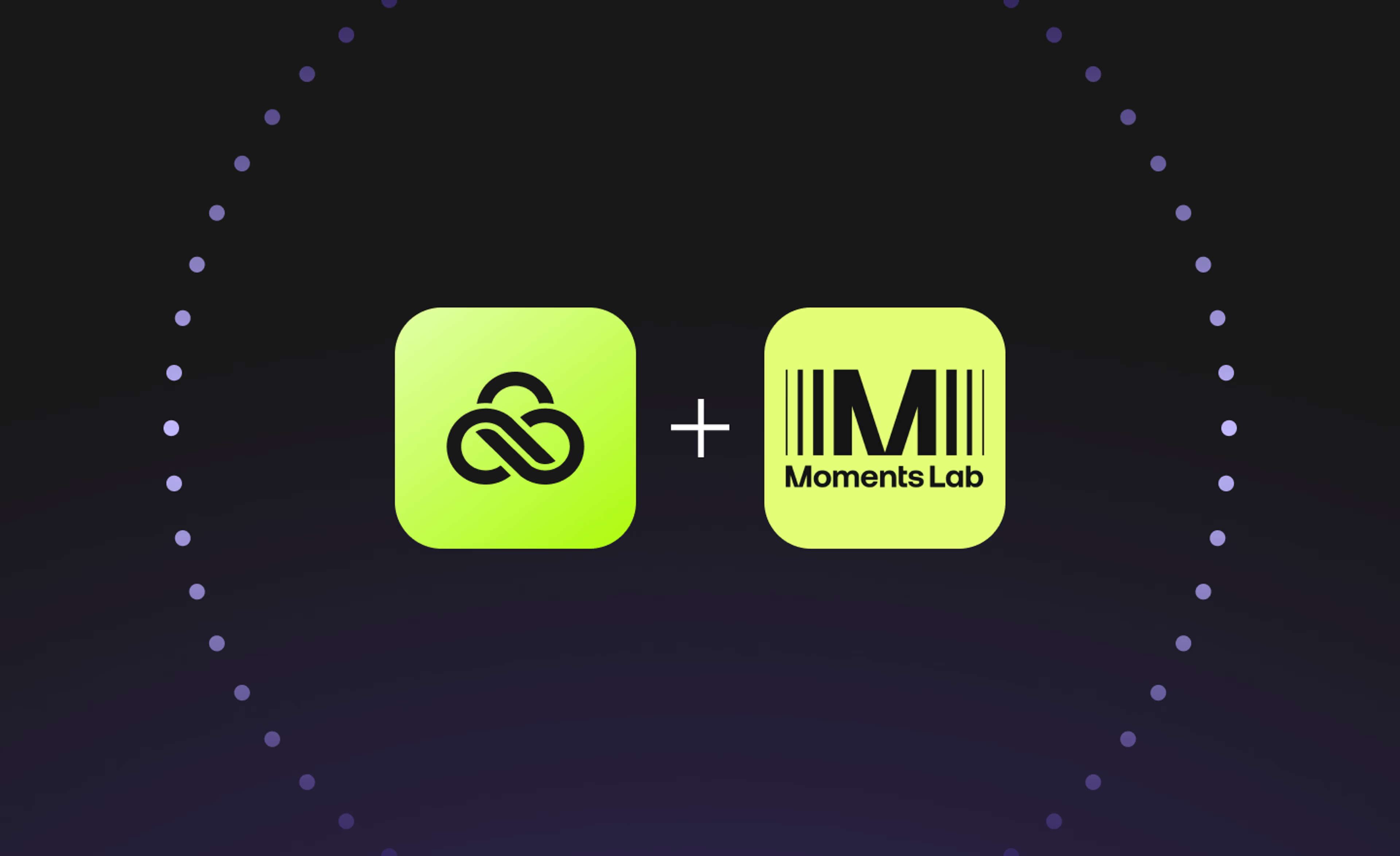
Creative production
Unlocking the potential of your media library with AI and real-time access
Explore how AI and real-time access make your media library searchable, actionable and ready for faster, smarter storytelling.
16 December 2025, 5 mins read
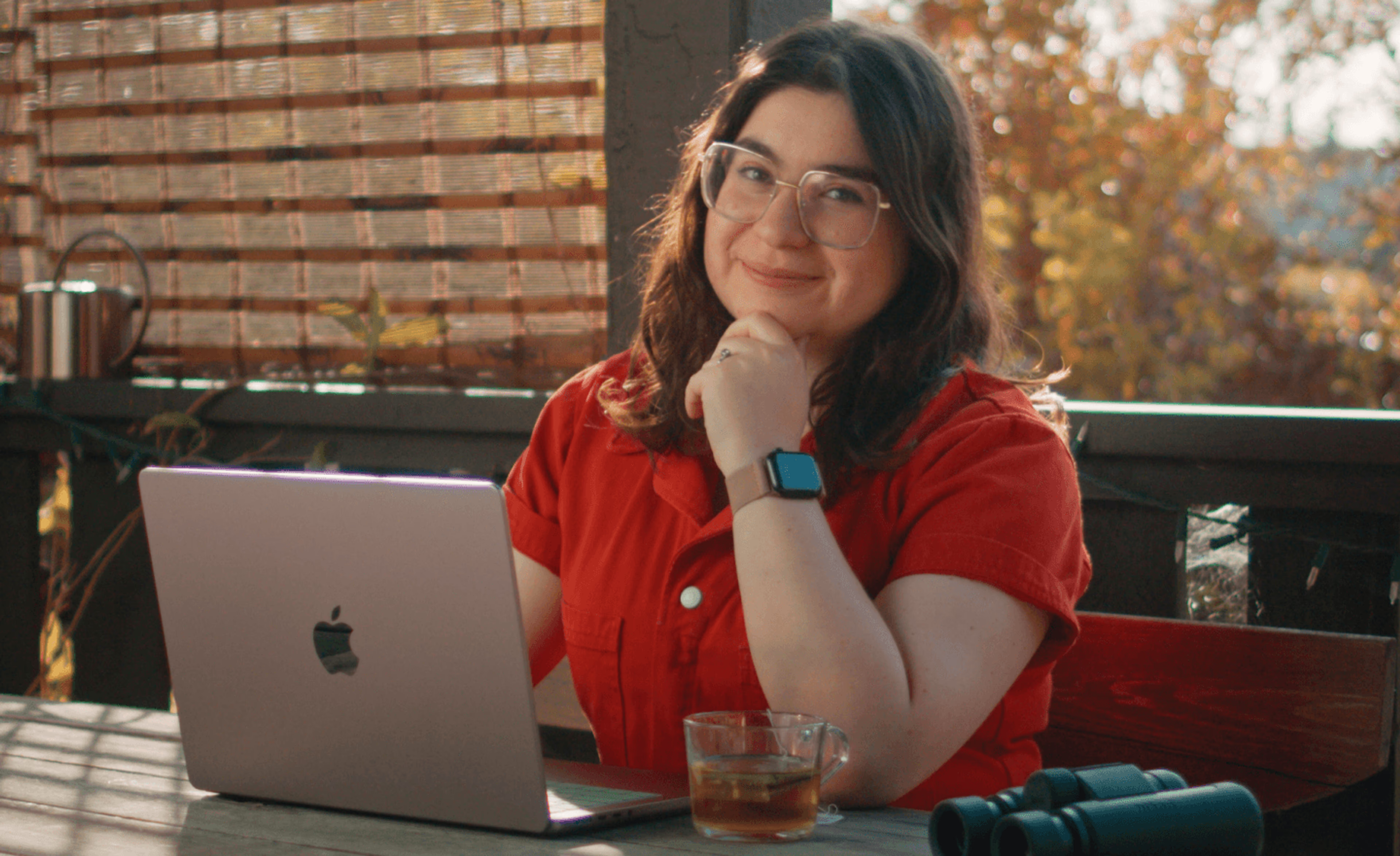
Creative production
How to build a creative workflow that really flows
Discover how to build a seamless creative workflow using practical strategies and tools. Get tips for collaboration and creative project management.
26 November 2025, 17 mins read

Collaboration
In the field
Madecraft’s post-production hacks for smooth workflows
Discover how Madecraft slashes hidden costs of post-production, boosting efficiency, saving time and keeping creativity flowing.
21 November 2025, 6 mins read
Join our newsletter
Get all our latest news and creative tips
Want the details? Read our Privacy Policy. Not loving our emails?
Unsubscribe anytime or drop us a note at support@lucidlink.com.